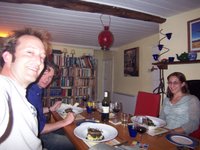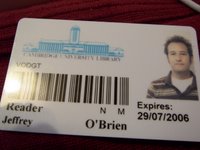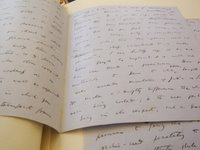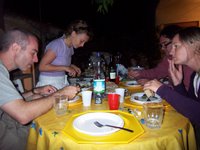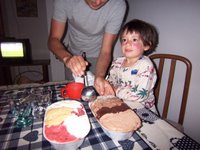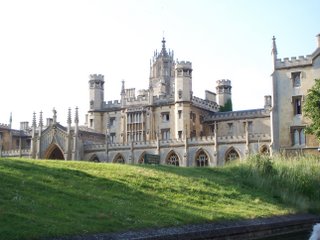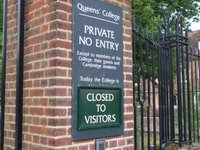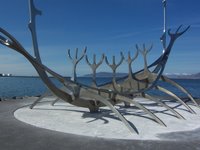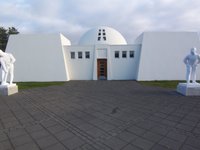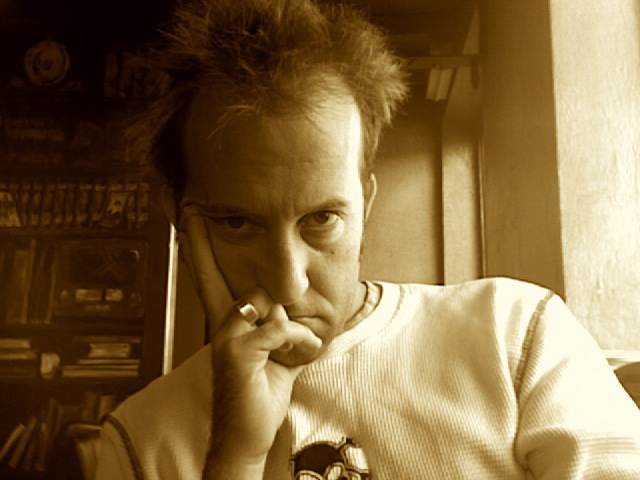As the Brits prepare for the recently approved ban on smoking in English pubs and restaurants, (following
 varying degrees of prohibition in Ireland, Italy, New York, and of course California, among many others), you might think there are no remaining black lung bastions in the world. Not true. This past spring, Czech voters struck down a bill that would have eliminated restaurant smoking, and in the process sent a very clear message: Prague is for smokers.
varying degrees of prohibition in Ireland, Italy, New York, and of course California, among many others), you might think there are no remaining black lung bastions in the world. Not true. This past spring, Czech voters struck down a bill that would have eliminated restaurant smoking, and in the process sent a very clear message: Prague is for smokers."What do you think the rate of lung cancer is here," Heather asked this morning as a woman stood outside the tiny paneria where we were eating breakfast and blew a cloud
 through the open door and onto our table. Whatever it is, it's gotta be on the rise. As of 2004, about 40 percent of all Czech men and 30 percent of Czech women smoked, and those numbers have been rising steadily since 2000. Narrow that survey to Czechs who live in Prague and eat out, and I bet the number would go as high as 75 percent. I've never seen smokers so emboldened. They walk into restaurants with lit
through the open door and onto our table. Whatever it is, it's gotta be on the rise. As of 2004, about 40 percent of all Czech men and 30 percent of Czech women smoked, and those numbers have been rising steadily since 2000. Narrow that survey to Czechs who live in Prague and eat out, and I bet the number would go as high as 75 percent. I've never seen smokers so emboldened. They walk into restaurants with lit  cigarettes and puff away as they order food, throughout the meal and before during and after espresso. The city center consists almost entirely of (elaborately decorated) cobblestone streets -- with cigarette butts wedged between the blocks. I saw my first no-smoking sign last night. It was taped on the door of a storage closet in a restaurant basement.
cigarettes and puff away as they order food, throughout the meal and before during and after espresso. The city center consists almost entirely of (elaborately decorated) cobblestone streets -- with cigarette butts wedged between the blocks. I saw my first no-smoking sign last night. It was taped on the door of a storage closet in a restaurant basement.Smoking isn't the only cultural clash we've experienced here. It's been almost 20 years since Czechoslovakia
 underwent its Velvet Revolution, peacefully abolishing communism and, not long after, splintering into two countries. Since then Prague has fallen to another significant revolution: consumerism. Within walking distance of where we're staying in Old Town are thousands of restaurants, cafes, cinemas, shopping malls, "massage" parlors, glass shops,
underwent its Velvet Revolution, peacefully abolishing communism and, not long after, splintering into two countries. Since then Prague has fallen to another significant revolution: consumerism. Within walking distance of where we're staying in Old Town are thousands of restaurants, cafes, cinemas, shopping malls, "massage" parlors, glass shops,  vinotecas, beer halls, sausage vendors, and row after row after row of makeshift tchotchke stands. If you're in the market for gaudy crystalware and "Prague Drinking Team" t-shirts, welcome to nirvana. What saves Prague from Coney Island cliche is its history and arresting architecture. I'm not a huge fan of the Gothic and Baroque styles that predominate the city -- it's all just so pointy, dark, and dripping with detail -- but nevertheless can't stop marveling at it and wondering how the city managed to escape the WWII bombing that decimated so many other parts of Europe. Everywhere you look, there's a cathedral, synagogue or palace that's older and more garish than the one you just came out of. I don't mean that in a bad way. This is Disneyland for Cure heads.
vinotecas, beer halls, sausage vendors, and row after row after row of makeshift tchotchke stands. If you're in the market for gaudy crystalware and "Prague Drinking Team" t-shirts, welcome to nirvana. What saves Prague from Coney Island cliche is its history and arresting architecture. I'm not a huge fan of the Gothic and Baroque styles that predominate the city -- it's all just so pointy, dark, and dripping with detail -- but nevertheless can't stop marveling at it and wondering how the city managed to escape the WWII bombing that decimated so many other parts of Europe. Everywhere you look, there's a cathedral, synagogue or palace that's older and more garish than the one you just came out of. I don't mean that in a bad way. This is Disneyland for Cure heads.Dining
 has been an interesting experience. Sausage, goulash, and beer are the staples. You know about at least a couple of the Czech beers -- the original Budweiser Budvar and Pilsner Urquell. I've had some terrific Staropramen, which brews a dark ale right here in Prague. All the beer sells in restaurants for about 25 korunas (crowns), or a little more than $1, for a pint. Finding good Czech wine is more of a challenge. The local red grape, Frankovka, is, as far as I'm concerned, Czech for "Robitussin." But there's a decent
has been an interesting experience. Sausage, goulash, and beer are the staples. You know about at least a couple of the Czech beers -- the original Budweiser Budvar and Pilsner Urquell. I've had some terrific Staropramen, which brews a dark ale right here in Prague. All the beer sells in restaurants for about 25 korunas (crowns), or a little more than $1, for a pint. Finding good Czech wine is more of a challenge. The local red grape, Frankovka, is, as far as I'm concerned, Czech for "Robitussin." But there's a decent  selection of Italian varietals, and I've had some nice Montepulciano and Valpolicella. As for the eating, well, I wouldn't exactly call the town vegetarian friendly. Heather and I have walked by countless beer halls and sausage stands in search of the lonely baguette with mozerella and tomato. But it's good to go hungry every once in a while. It keeps you alert. And it's not like we're starving. We've had a few very good meals (we've spent anywhere from $30-$50ish on a nice meal for two, including wine...not dirt cheap, but not San Francisco), including one last night at a restaurant called No Stress. It aptly described the service. And my mood -- save for the angst I was feeling about all the cigarette smoke.
selection of Italian varietals, and I've had some nice Montepulciano and Valpolicella. As for the eating, well, I wouldn't exactly call the town vegetarian friendly. Heather and I have walked by countless beer halls and sausage stands in search of the lonely baguette with mozerella and tomato. But it's good to go hungry every once in a while. It keeps you alert. And it's not like we're starving. We've had a few very good meals (we've spent anywhere from $30-$50ish on a nice meal for two, including wine...not dirt cheap, but not San Francisco), including one last night at a restaurant called No Stress. It aptly described the service. And my mood -- save for the angst I was feeling about all the cigarette smoke.



